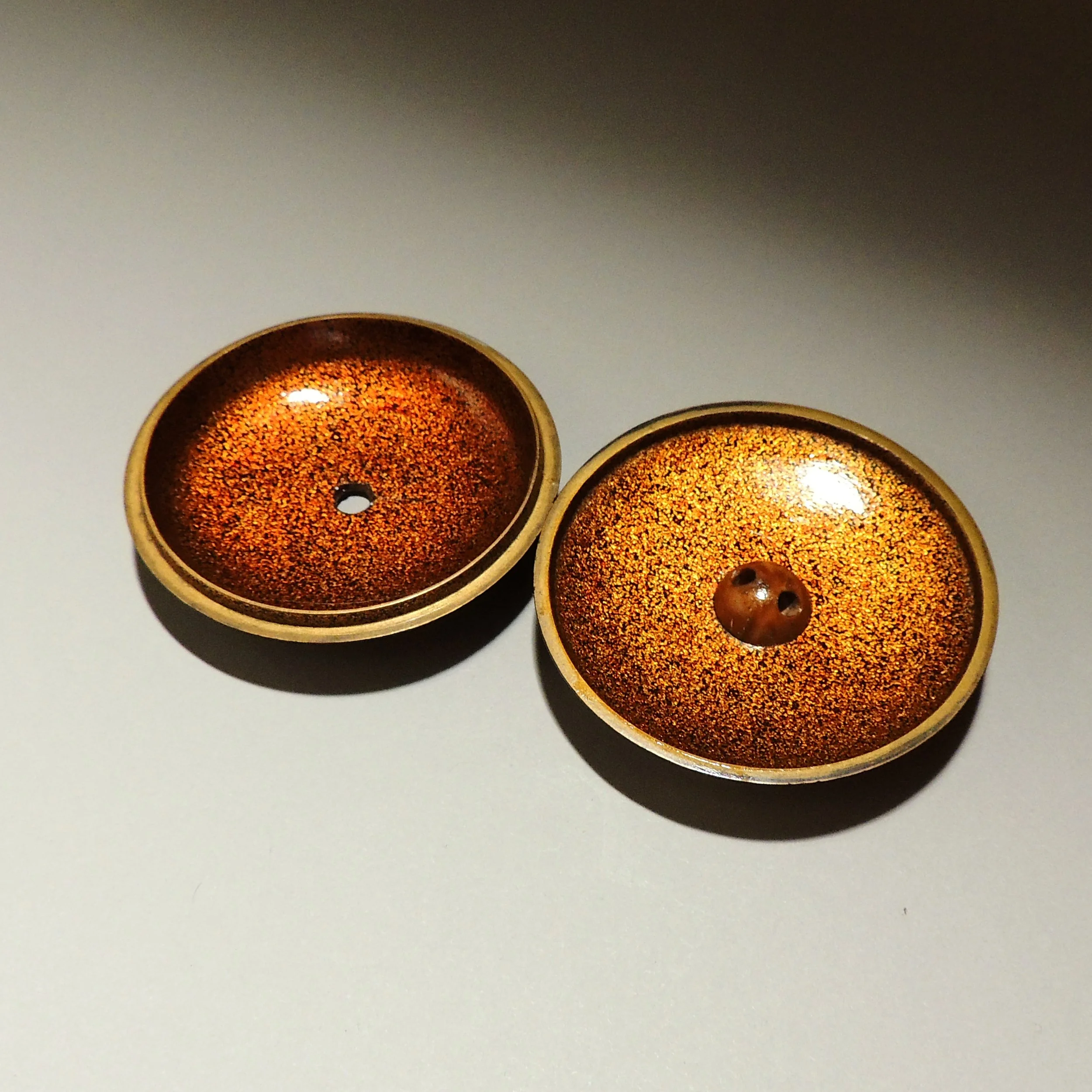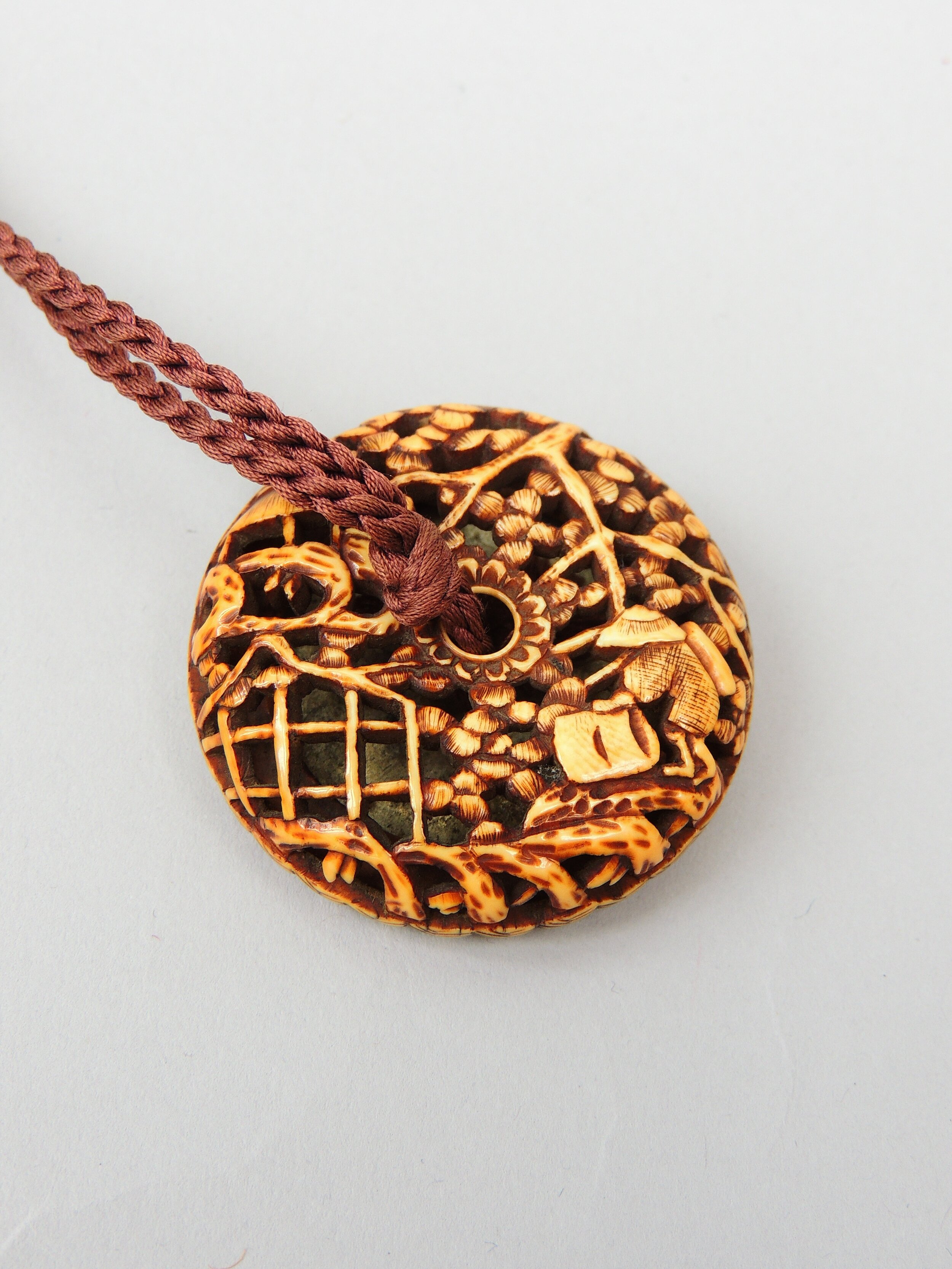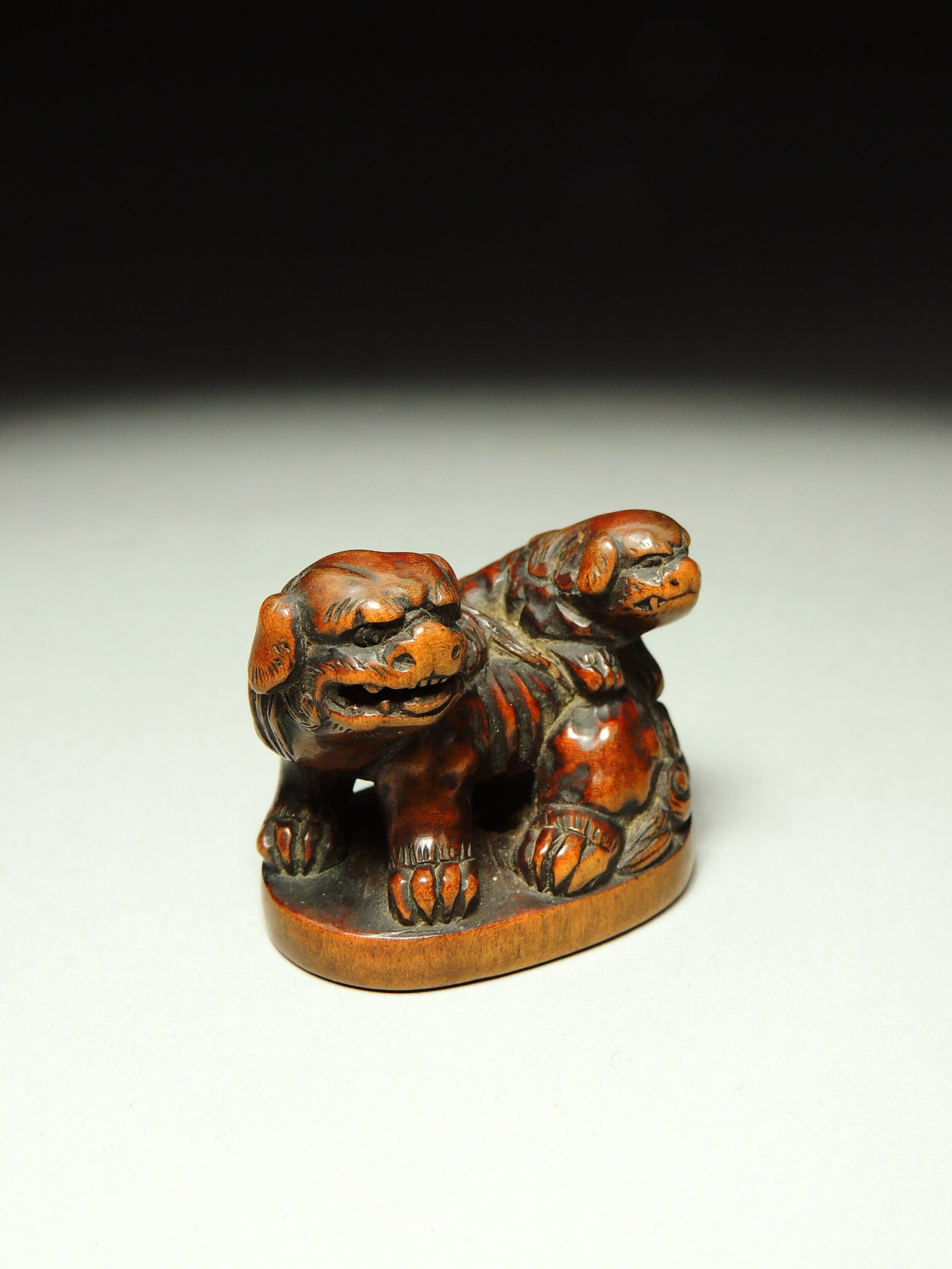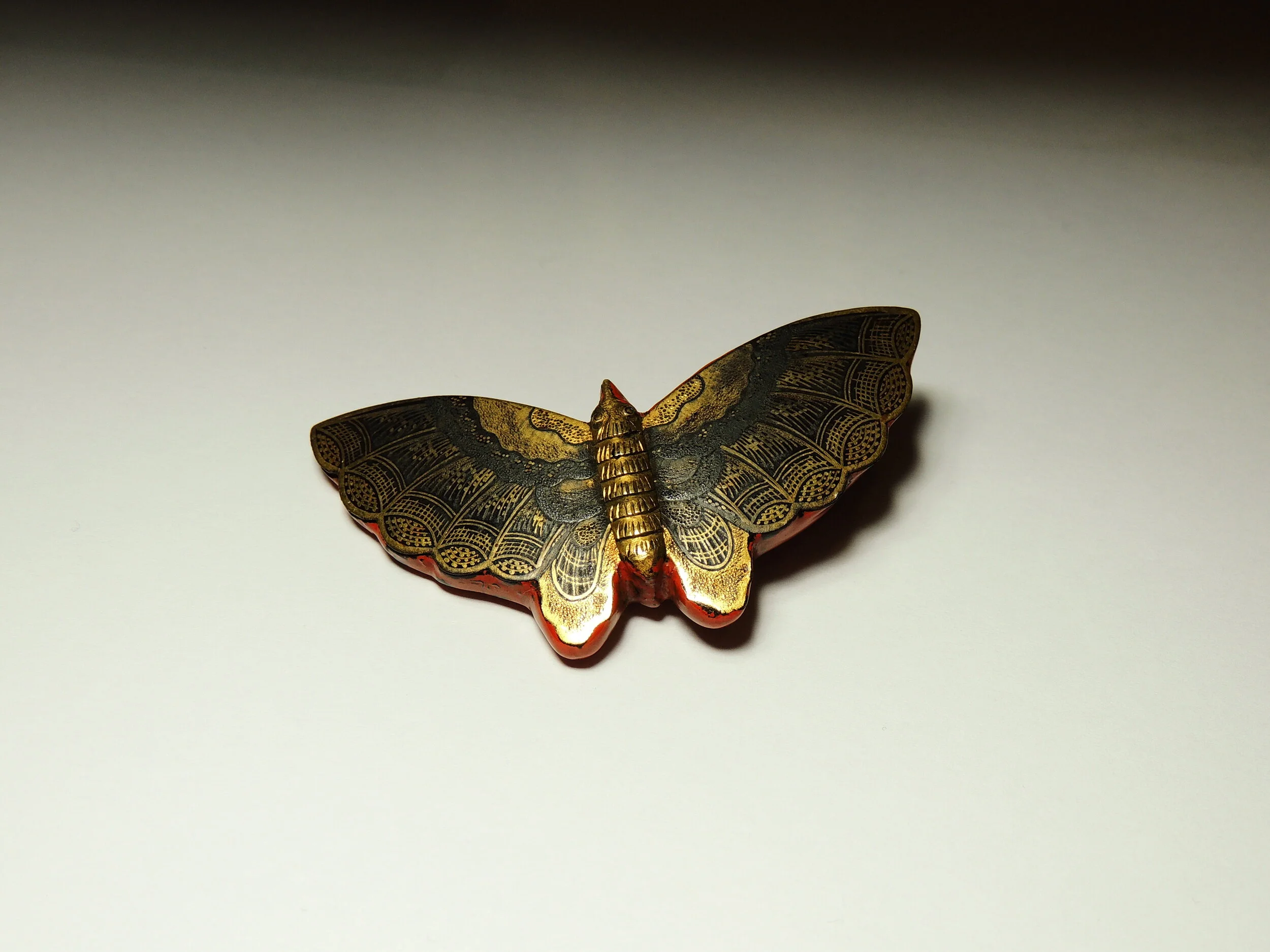Anonymous
Edo / Meiji period, 19th century
1868-1912
Netsuke
A boxwood netsuke of Daruma yawning after waking from a sleep. Bone or ivory inlay for earrings, teeth, and eyes with a red lacquer kesa clothing.
The historical Bodhidharma (known as Daruma in Japan) was an Indian sage who lived sometime in the fifth or sixth century AD. He is understood as the founder of Chan (Zen) Buddhism after traveling to China. Japanese legend also credits Bodhidharma with plucking out (or cutting off) his eyelids. Apparently, he once fell asleep during meditation, and in anger, he removed and cast them away. The eyelids fell to the ground and sprouted into China's first green tea plant.
42mm x 30mm
Unsigned









